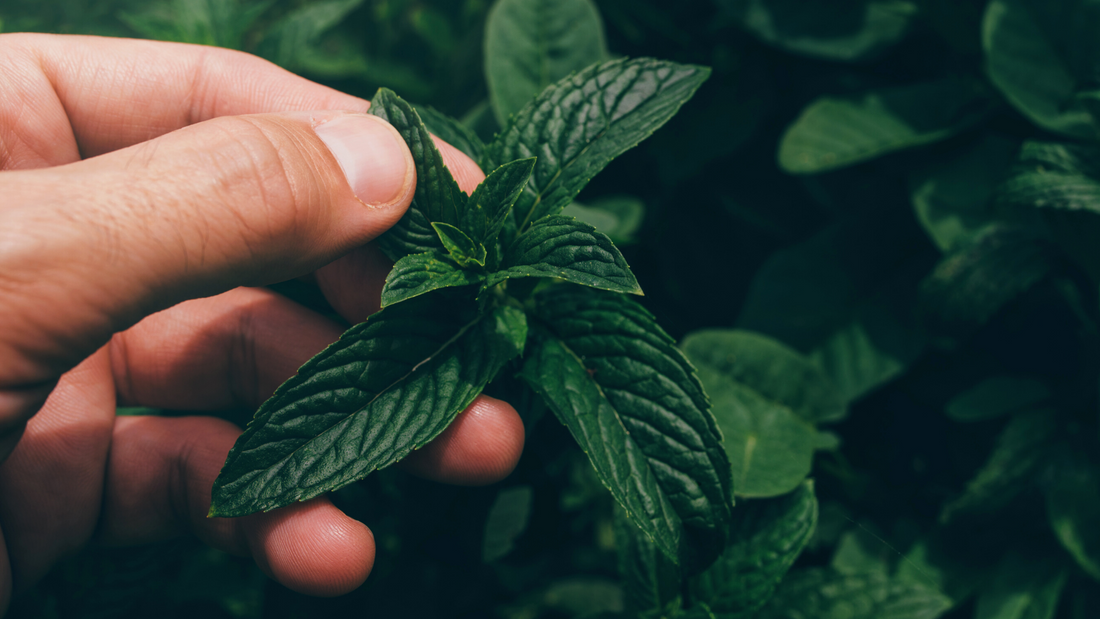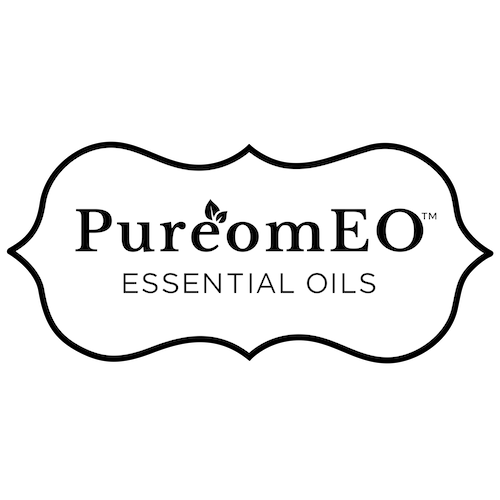
Keep on Zingin’: A History of Peppermint
Share

If you’re a fan of peppermint essential oil, you already know that it boosts your mood, sharpens your focus, and combats a host of health issues, such as poor circulation, joint pain, and headache, to name just a few.
Even if you're not super familiar with all the benefits of diffusing or applying diluted peppermint essential oil, you’ve likely come across peppermint in your toothpaste, mouthwash, or even in your mug of cocoa.
Whether you’ve been using peppermint oil therapeutically for decades or are merely mildly intrigued by its cool, crisp scent and many benefits, peppermint is an herb that has been with us for centuries, and has a history as rich as its tantalizing aroma.
First, an Origin Story
In Greek mythology, Minthe was a river nymph in one of the five rivers of Hades. One day, Hades came upon Minthe and was about to seduce her when his wife Persephone caught them. Persephone turned Minthe into a humble mint plant that people would tread upon. Mint supposedly got its sweet, pungent smell when Hades softened the spell, so that when people walked upon the object of his affection they would smell her sweetness.
What is the History of Peppermint Use?
While the Greek version is one of many origin stories about mint, the herb has actually been around even longer than the ancient Greeks. One of the oldest surviving medical texts in the world, the ancient Egyptian Ebers Papyrus from 1550 BC, cites mint as a tool to soothe gas, cramps, and bloating.
In ancient Greece and Rome, mint was used in funerary rites, and to scent the body before festivals and ceremonies. Pliny the Elder believed that when applied to the temples, mint could soothe a headache, something that is still widely practiced today. Greek physicians such as Galen and Dioscorides asserted that mint could prevent people from vomiting blood and speculated that it could prevent women from becoming pregnant.
Quick public service announcement: it can’t.
In early modern Europe, the entire mint plant was used for a wide variety of purposes. Dietaries from the late 1500s suggest that mint juice was effective against poison, and that, when eaten raw, mint boosted circulation. Mint powder was thought to aid in killing stomach parasites, and when mixed with milk could be used for this purpose even with infants.
Monks in the Middle Ages were known to use peppermint as a tooth polisher and breath freshener, and during the same period, cheese makers and bakers learned that the strong smell of peppermint would keep rodents out of their kitchens and storerooms.
Some believed that mint had almost unlimited virtues. The physician Tobias Venner wrote in 1620 that the smell of mint “doth greatly comfort the braine and spirits, stirre up the senses, especially the memorie, and make the heart cheerefull.” He even touted mint as a brain energizer, advising that those who “leade a studious kinde of life” should regularly take time to enjoy the smell of mint.
As far back as the early 1620s, physicians recommended rinsing the mouth with mint boiled in white wine or vinegar, along with rubbing the gums with dry mint powder, as “a good lotion for the teeth and mouth, and rottennesse of the gummes.” The fact that mint freshens breath, and cleans teeth and gums is obviously still present with us today, as you’d be hard pressed to find a toothpaste or mouthwash that didn’t contain at least some mint.
Where Does Peppermint Grow?
Whereas many varieties of mint have grown throughout the world since before recorded history, what we know as peppermint is thought to be a native English plant, and possibly a hybrid between M. spicata and M. aquatica. While historians aren’t sure when it was first cultivated in England, the commercial peppermint industry in England began around 1750.
Advertisements for mint oil indicate that the original American colonies were importing the product from Britain, often for medicinal recipes. Eventually, farmers in New York and New Jersey realized they could grow mint themselves, especially peppermint and spearmint, which are easily cultivated in moist conditions.
Commercial production of peppermint began in the United States in Wayne County, New York in the early part of the 1800s. It’s thought that for as long as 40 years, this region was the only area producing distilled mint. Eventually, the chemist, politician, businessman, and philanthropist, A.M. Todd posited that the rich, damp soils of Michigan would produce quality mint. Around 1870, he began cultivating peppermint in the Kalamazoo area, and by 1920, 90% of the peppermint and spearmint oils of the world were being produced in southwestern Michigan.
Mint in the U.S. is now primarily cultivated in California, Idaho, Indiana, Oregon, Washington, and Wisconsin. Peppermint crops contribute approximately $100 million to U.S. export trade, and in 2018 the United States produced enough peppermint oil to fill an Olympic-sized swimming pool—5.38 million pounds.
What are the Health Benefits of Peppermint Essential Oil?
The short answer is that there are a lot of them. Here is a list of some of the most well-researched benefits. This isn’t meant to be exhaustive, but it’s a good starting point.
Antibacterial, Antifungal, and Antiviral
Peppermint essential oil effectively eliminates many types of bacteria, fungus, and viruses. This means that, diluted, it can hasten wound healing. It can also improve oral health, by cleansing the mouth, slowing tooth decay, strengthening the gums, and soothing toothaches. Lastly, diffusing peppermint essential oil can lessen the amount of airborne viruses in the air.
Anesthetic
The menthol in peppermint essential oil can lessen pain and inflammation. When diluted and rubbed onto the skin, peppermint oil can soothe aching muscles, sore joints, and arthritis pain. It can also reduce swelling and inflammation. Peppermint oil is also a wonderful remedy for headaches. In a 1996 study, researchers found that a solution containing 10% peppermint oil was as effective in relieving headache pain as 1,000 milligrams of acetaminophen.
Nausea and other Digestive Issues
While peppermint essential oil should not be ingested, using it for aromatherapy has repeatedly been shown to significantly curb nausea in chemotherapy patients, pregnant people, and other people experiencing nausea, particularly after surgery. Rubbing peppermint oil onto the stomach may also help with cramping, bloating, gas, diarrhea, constipation, even IBS.
Respiratory Ailments
Peppermint is an expectorant and decongestant, and can be used to treat many respiratory ailments including asthma, bronchitis, sinusitis, and coughs. Peppermint oil can also reduce inflammation of nasal passageways, particularly when menthol vapors are inhaled.
Mental Health
Peppermint oil is an effective relaxant and can be helpful in treating insomnia, stress, anxiety, fatigue, and depression. Some research also suggests that peppermint improves memory and general cognition.
Here at Jereomeo, we are borderline obsessed with our peppermint essential oils! We carry both a high menthol variety and an organic option. Both varieties are extremely potent and powerful, and they’re likely to be some of the richest, more energizing peppermint oil you’ve ever smelled.
When you're ready to try some, pick up a bottle of our highly concentrated peppermint oil, chock full of deep and stimulating aromas. Our knowledgeable staff is happy to talk with you about how to use the oil at home, and also suggest complimentary scent combinations.
PureomEO™ Essential Oils sources the highest-quality ingredients from eco-friendly and small-scale farms, distilleries, and producers. All of our products contain only all-natural, plant-based ingredients with no animal products, preservatives, or synthetics. Every batch of PureomEO™ Essential Oil is lab tested and analyzed for quality assurance.
Order online or stop by our North Loop shop today, and pick up the oils you need to keep yourself feeling happy, grounded, and focused on your next grand adventure, whatever it may be!
